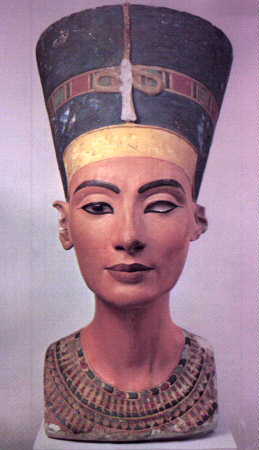In the ancient world, women were
usually considered on a level below men. In ancient Greece, women were stereotyped as
having strong emotions and weak minds, in need of a man to keep them from doing
damage to themselves. Roman women had no control over their finances and
required a man to supervise them. Women in ancient China were not even considered
worthy of education or literacy and were simply called “daughter one” and
“daughter two.” While most ancient cultures treated their women unfairly, Egypt
did not. Ancient Egyptian women had equal rights and similar opportunities to
the men in their culture.
Throughout Egypt’s rich history, women played
important roles in many aspects of ancient Egyptian civilization. Ancient
Egyptian women had identical legal rights to the men in their culture. Women had
the legal right to sell and dispose of property (land, servants, livestock,
slaves, money, etc.), enter contracts, sue and be sued in civil courts, serve
as witnesses, and be part of juries. Noble women often controlled their estates
and helped their husbands with their professions. There were even marriage
contracts, similar to prenuptial agreements, to protect men’s and women’s
property in the marriage. Women also inherited equally; male and female
children evenly inherited their parents’ property, and wives controlled a third
of their husbands’ estates after their deaths. Women could also take charge of
business affairs. Despite the fact that social norms often held back women from
acting in total equality to their male counterparts, women were still treated
equally under the law.
Women were not only empowered in
the courts, but also had more rights in the religious arena. When women acted
as priestesses, they usually worked in temples dedicated to goddesses, while
men worked in temples for the gods. The title of priestess was commonly held by
women until the New Kingdom, when priesthood
became a full-time position. After priesthood became a difficult option, women
who wanted to get involved in the temples became singers or musicians. Shemayet, the title for musician, was
the second-most popular title for women. Women could also participate in
entertainment troupes, or kheneru.
Women from all social classes, from the elite non-royal to peasant classes,
could serve in temples in some form.
In addition to equality in legal
and religious fields, women could also rise to the top in rulership positions.
While kingship was normally held by men, women also became pharaohs on
occasion. Many female pharaohs are not well-known, mostly because there is no
definitive evidence that they were indeed pharaohs. One such woman, Merneith,
is buried with the full honors of a pharaoh, but there are no documents
verifying that she reigned as a pharaoh as opposed to a regent or queen.
However, there are several well-known, heavily documented female pharaohs, like
Hatshepsut. Her husband, the pharaoh, died, leaving an infant to inherit, so
she became regent. After seven years, she proclaimed herself as pharaoh. During
her reign, she renovated hundreds of temples, established trade relationships,
maintained peace in Egypt,
and brought widespread prosperity to the country.
In most cultures today, women
either have or are fighting for equal rights. Among the rights that feminists
have fought for is fairness for both sexes in the courts. Because of their
efforts, women now have the ability to fully utilize the court system.
Feminists have also fought for women’s place in most major religions to be
expanded; in both Christianity and Judaism, women have been successfully
fighting to be ordained and have other rights within the religious sphere.
While a woman has not yet assumed the highest position in the government,
record amounts of women are holding seats in Congress and other governmental
positions. The woman of ancient Egypt
is similar to the woman today: able to hold her own in a court, place of
worship, and government.

No comments:
Post a Comment